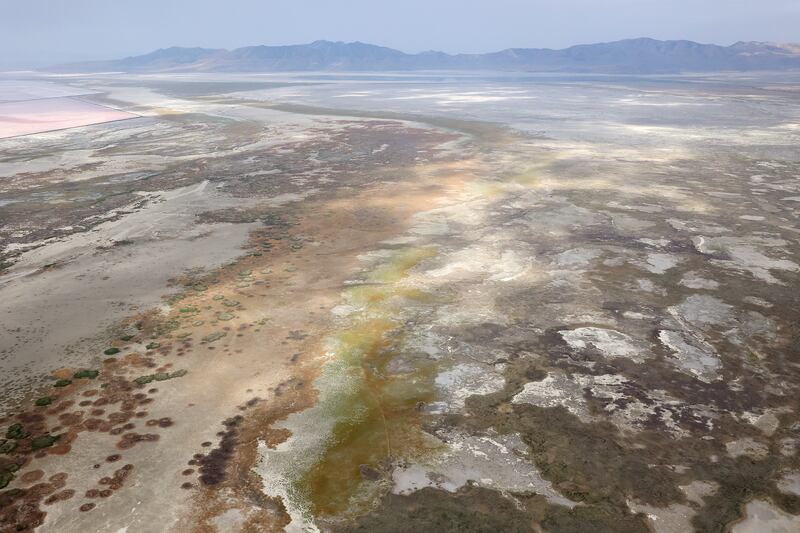There are major environmental and economic concerns due to the low water levels of the Great Salt Lake. Currently, there is not enough water to maintain desirable lake levels and meet agriculture, domestic, commercial, municipality and industrial uses in the Great Salt Lake Basin. We need to consider all options to improve the conditions of the lake while meeting critical upstream water needs.
The following approximate values from existing reports are used for a simplistic illustration.
The current level of the Great Salt Lake is about 4,190 feet mean sea level, or msl, with a water surface area of 600,000 acres and a volume of about 8 million acre-feet.
In 2000, the water level was about 4,200 feet msl with a water surface area of about 1.1 million acres and a volume of about 15 million acre-feet.
In the mid-1980s, the water surface elevation was about 4,212 feet MSL, and water surface area was over 2 million acres.
As a simplified example, if the Great Salt Lake target water level is 4,200 feet msl, a 10-foot increase, the surface area would increase by about 500,000 acres requiring 7 million acre-feet to fill. The 500,000 acres of increased water surface would result in approximately 1 million acre-feet per year more net evaporation from the lake.
Utah’s irrigated agriculture in the Great Salt Lake Basin is about 550,000 acres (which is about half of Utah’s total irrigated agriculture lands), with a net irrigation depletion of about 750,000 acre-feet per year. Thus, considering the recent years’ annual inflow quantities, not irrigating all of Utah’s current irrigated agricultural land in the Great Salt Lake Basin would not fill the lake to 4,200 feet MSL or even sustain 1.1 million acres of water surface area.
In other words, retiring an acre of irrigated agriculture provides less than one acre of lake surface area. Retiring irrigated land increases the size of the lake, but it may not restore it to an acceptable target level without other mitigation measures. Moreover, irrigated agriculture is important to Utah’s citizens and economy. While decreased upstream depletions maintain a higher lake elevation, the lake’s elevation rises or falls with and without upstream depletions based on the natural water supply.
I support additional studies on the Great Salt Lake and water depletion from the basin; good science, research, data collection, experimentation and pilot projects are needed to develop good options and policy. There is a need to identify acceptable target levels and mitigation measures for the lake. There is a need to better understand the relationships between lake inflow, precipitation timing (season, snow or rain) and location (mountains, valleys, vegetation, surface soils, rocks, subsurface formations, etc.), air and surface temperatures, evaporation demands and depletions.
Tools are being developed to estimate spatial and temporal depletions in natural, agriculture, industrial and urban areas using satellite imagery gathered over many decades. These relationships can help determine projects that provide the most cost-effective benefits. Water conservation and limited transfer or leases of water rights are a start to providing more water for the lake, but these measures alone may not solve our Great Salt Lake problems.
Other measures should be explored including strategic diking and water level control to preserve industry and critical habitats with the limited available water supply, dust mitigation by irrigation (flooding or sprinkling) of selected areas of the dry lakebed prior to and during harmful dust storms, dry lakebed treatments such as mulches (gravel, linings, etc.), dust control chemical binders, managed halophytes, deep plowing/disking/furrowing, as well as other innovative practices.
There will likely be years ahead with greater lake inflow, but waiting is not the best option. I’ve been involved with several terminal lake water supply and dust mitigation projects, including Owens Lake, Salton Sea, Pyramid Lake, Walker Lake, and Lahontan Valley Wetlands, and based on these terminal lake examples, managing the Great Salt Lake could cost billions of dollars and may take decades. Thoughtful, timely and judicious studies can help provide acceptable solutions.
L. Niel Allen, Ph.D., has more than 40 years of experience in agriculture irrigation and water resource consulting, extension, teaching and research.

